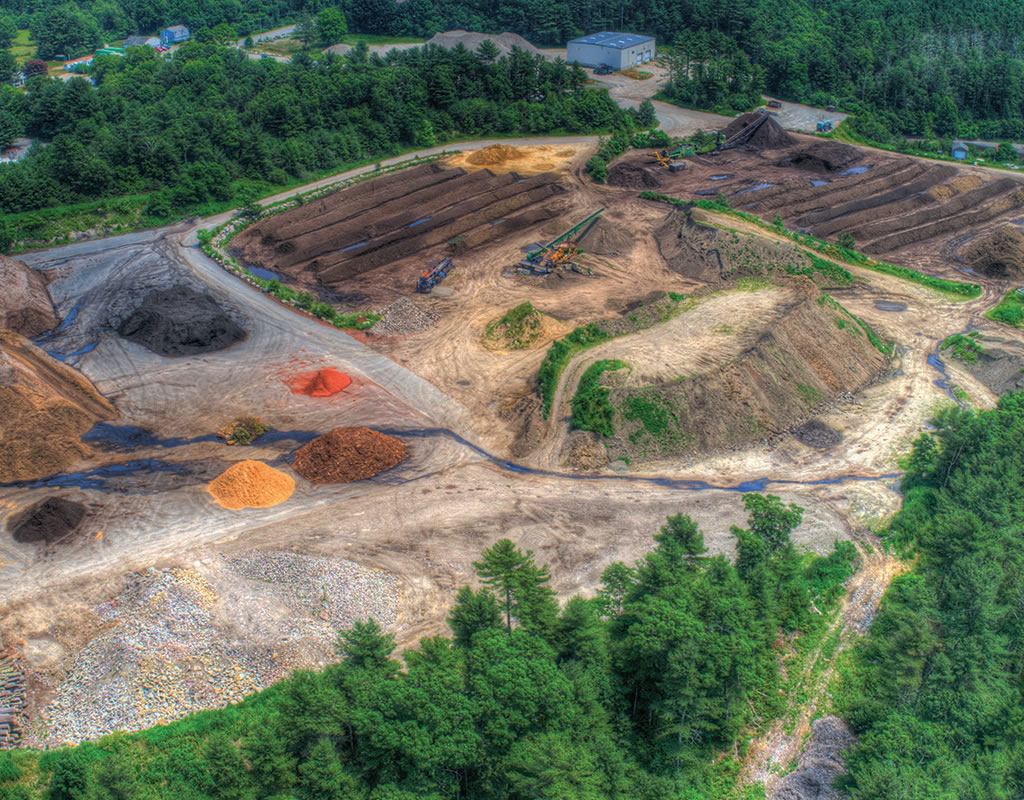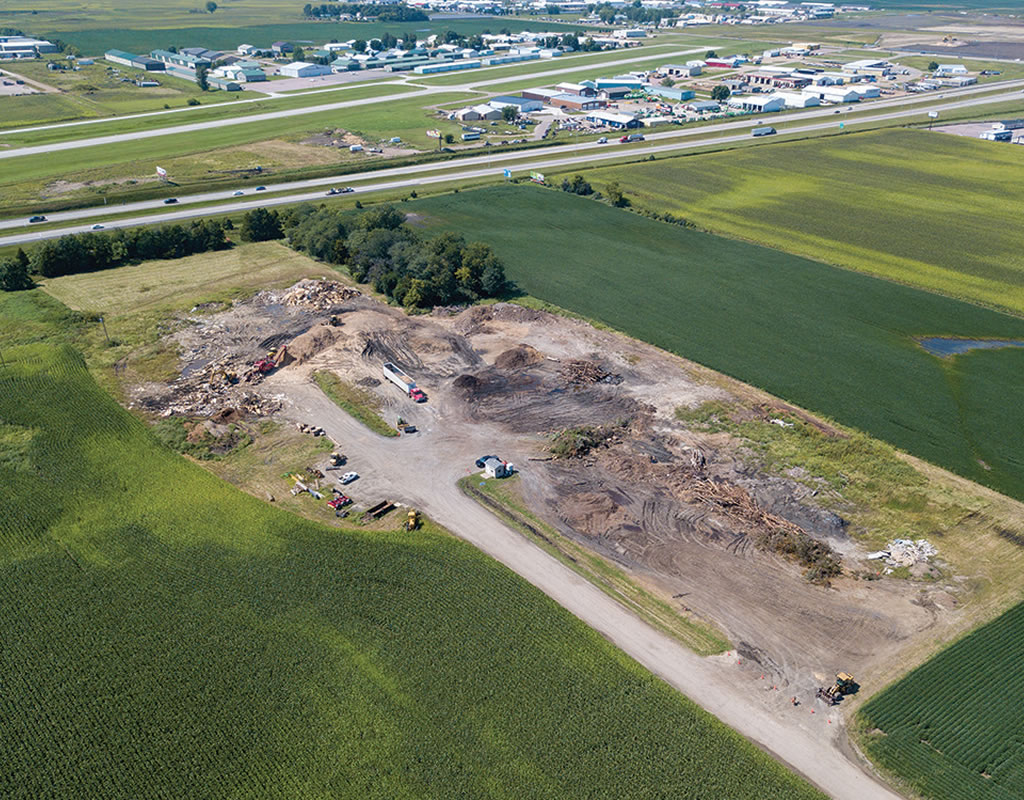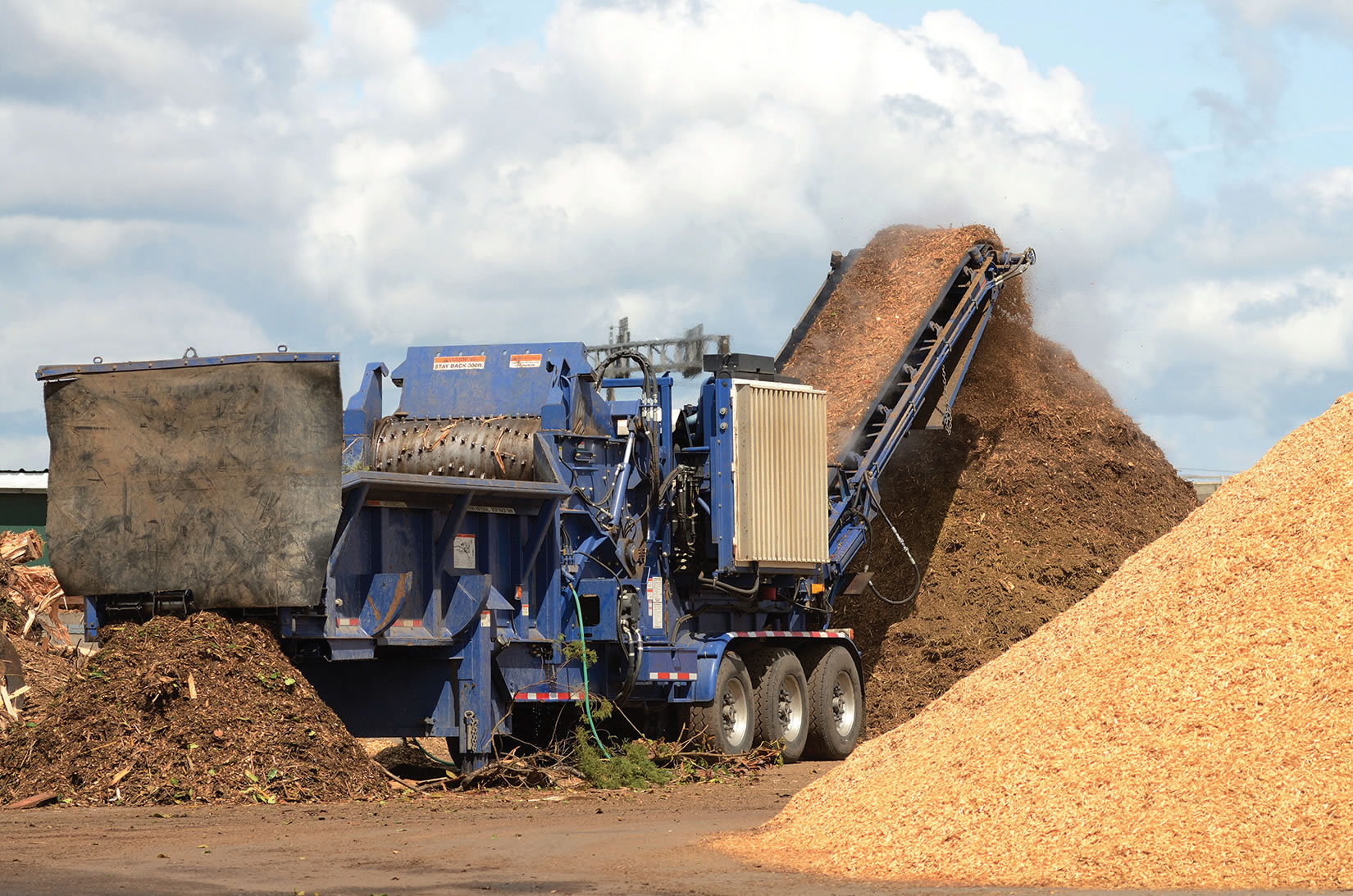By P.J. Heller
New battle lines are being drawn in both the United States and Europe over the contentious issue of whether emissions from power plants burning wood pellets to produce energy are carbon-neutral or if they are actually generating more carbon emissions than if the plants were burning only coal.
The outcome could have major implications for the mulch industry in the U.S., which although a small player in the forest residuals market, has been impacted by the huge demand for wood pellets, particularly from the United Kingdom and Northern Europe.
Among the latest developments in the skirmish:
* The Securities and Exchange Commission is asked by nearly three dozen pension and investment funds to more closely monitor companies’ climate benefit claims, and establish and enforce clear guidelines applicable to companies that may be claiming climate benefits.
* European leaders begin considering new policies and guidelines for the use of wood energy.
* Belgium pulls the plug on plans to subsidize what it said would be the world’s largest wood chip-biomass fired power plant, effectively killing plans for its construction.
* The U.S. Senate passes the Energy Policy Modernization Act of 2015 which includes an amendment that encourages the burning of wood pellets to create energy and which describes the practice is carbon-neutral. A letter opposing the amendment is signed by 60 top U.S. climate scientists. “Legislating scientific facts is never a good idea, but is especially bad when the ‘facts’ are incorrect,” the letter says. Another letter from more than 75 environmental and community groups urged the Senate to reject the entire bill due to the biomass amendment.
* The New York Times, the Washington Post and the MIT Technology Review rail against the Senate amendment that would list biomass as a renewable energy resource because of its so-called carbon-neutrality. “This is a rank example of Congress legislating science rather than allowing agency experts to make determinations based on facts, and the results could be very bad for the environment,” the Post said. MIT Technology Review called the amendment “junk science.”
One of the latest shots that was fired came from the 34 pension and investment funds, who asked the Securities and Exchange Commission to investigate what they said were misleading statements made by the world’s largest wood pellet manufacturer concerning emissions and environmental impacts when it prepared to go public in 2015 on the New York Stock Exchange.
Enviva, a Maryland-based company which operates six plants in the southeastern U.S., “makes multiple statements that either imply, or state directly, that burning biomass ‘reduces’ power plant emissions. Enviva does not disclose in any SEC filing that combustion emissions are not counted under European carbon accounting protocols,” according to the letter to the SEC.
“Enviva claims that burning their wood pellets reduces emissions by more than 80 percent, compared to coal,” notes Mary S. Booth, director at the Partnership for Policy Integrity (PFPI). “However, data from Drax Power in the UK, one of Enviva’s biggest customers, show the facility emits more CO2 when burning wood and other biomass than when burning coal, a physical reality that contradicts Enviva’s claims. It’s urgent that the bioenergy industry come clean on its real carbon and forest impacts.”
An Enviva spokesman dismissed the claims by PFPI, noting that “strong scientific evidence clearly demonstrates that wood biomass produces about 80 percent less lifetime carbon emissions than coal . . . Authoritative, independent scientific and public policy organizations have taken positions that contradict PFPI.”
He said similar allegations were made by the organization and investor groups in the past against three publicly-traded electric utilities that use wood biomass to generate power and that “PFPI has not cited any response or acknowledgment by any agency or official organization in more than two years, which raises significant questions about the validity of these charges.”
Enviva also cited studies and reports to bolster it case that wood biomass produces less lifetime carbon emissions than coal when used to create energy. “These impeccable public policy and scientific sources support the lifetime greenhouse gas benefits of wood biomass compared to fossil fuels. The PFPI report you cite does not include any credible evidence that disputes these sources,” Enviva said.
One study referenced, in November 2015, looked specifically at wood pellets produced in the U.S. and exported to the United Kingdom to replace coal in electric power generation. It concluded that wood pellets produce lifetime carbon emissions that are 74 to 85 percent lower than coal, according to Enviva.
Enviva produces about 2.2 million metric tons of wood pellets annually.
Robert C. LaGasse, executive director of the Mulch and Soil Council, notes that under a UK “loophole,” biomass is considered as zero emissions, even though he says it emits even more carbon than coal to produce the same amount of energy.
Biomass got a pass on emissions because when the UK and other countries set their carbon reduction goals, they “manipulated the rules” to reduce the use of coal and fossil fuels “by turning a blind eye to the consequences of the alternatives,” he says.
“You’re getting a free pass on the biomass because of a regulatory decision, not a scientific one. Science is an inconvenient truth. These are political issues. They’re not scientific issues,” LaGasse adds. “All these companies are claiming they’re having this great environmental benefit but they’re not counting the major emissions.”
Scot Quaranda, a spokesman for Dogwood Alliance, agrees.
“The science behind it is really silly,” he says. “Their basic assumption is if you cut down a tree and burn it, as long as another tree is planted in its place, it’s carbon-neutral. So they’re not counting the smokestack emissions. They’re just using this kind of theoretical: cut a tree, plant a tree, all is good.”
“Renewable energy is not automatically carbon-neutral, and power plant emissions data demonstrate that burning wood for fuel emits more carbon dioxide per megawatt-hour of electricity than burning coal,” explains Dogwood Alliance, a nonprofit that works to protect Southern forests. “Forest studies and modeling confirm that while trees may ultimately grow back and offset carbon emissions from burning wood, this process takes decades to more than a century, to the extent that it occurs.”
“You burn a tree you release all the carbon in one fell swoop. You replace it with a sapling and it takes that sapling 30 years to grow and soak up what you released in an instant,” agrees LaGasse.
European leaders, meantime, are looking into new policies and guidelines for the use of wood energy. A public comment period recently ended and a draft version is expected within the next six months. That report will eventually go to the European Parliament for debate.
Quaranda says his Asheville, N.C.-based organization is optimistic that change will be coming.
“In general, there’s agreement this [burning wood for energy] isn’t as clean and green as we thought it was. We anticipate that there will be a much stronger policy,” he says.
“More and more scientists have been weighing in to say they think wholesale burning of wood for electricity is a bad idea because of its impacts on climate” and that a “much more measured policy is needed,” Quaranda says. “Environmental groups around the world are concerned about this issue and weighing in on it as well. We’re even seeing some industry players, especially European companies if they use wood, weighing in from the concept called ‘cascading use.’”
Under that concept, the best use for wood is its highest use.
“So we should be letting trees grow to use them for lumber rather than cutting them down and burning them for electricity,” he explains.
In Belgium, government officials recently announced they would not subsidize what had been described as the world’s largest wood chip-biomass fired power plant. The 215 megawatt plant planned for Ghent would have required a subsidy of $2 billion Euros.
Former Belgium energy minister Annemie Turtelboom, who resigned in May, had said that biomass was neither green nor sustainable.
“Not only is that not financially sound, but biomass is not even a green or sustainable solution. It’s actually a form of environmental deception,” added Gwendolyn Rutten, a Belgium politician with the Open VLD party.
A second biomass facility in Lanherlo was constructed but was reported for sale by its owner. It was never operated.
Guido Camps, former head of the energy regulator Creg, agreed with Open VLD.
“Biomass is a bad idea,” he said. “The facilities in Ghent and Langerlo are a never-ending story. They are more expensive and dirtier than solar and wind power, and they will never be able to survive without subsidies.”
LaGasse has been highly critical of subsidized biomass operations.
“I think the whole system is unsustainable,” he says. “Any market that is supported predominantly by subsidized tax dollars and cannot survive in a free market economy cannot last. So all of the investment made to support that, when those tax subsidies disappear, the whole pyramid collapses.”
Still unresolved is the fate of the Energy Policy Modernization Act in Congress. House and Senate conferees need to meet to try to reconcile their versions. Unknown is whether the biomass amendment — led by Sens. Susan Collins (R-Maine), Angus King (I-Maine) and Amy Klobucher (D-MN) — will survive.
“While the carbon neutrality of biomass harvested from sustainably managed forests has been recognized repeatedly by numerous studies, agencies, institutions, and rules around the world, current policy uncertainty could end up jeopardizing rather than encouraging investments in working forests, harvesting operations, bioenergy, wood products, and paper manufacturing,” Collins said in a statement. “… By requiring every federal department to be on the same page when it comes to biomass policy, our amendment will ensure that biomass will play an important role in shaping a clean and affordable energy future for America.”
Among those supporting the amendment: the National Alliance of Forest Owners, the American Forest and Paper Association, the Biomass Power Association and the American Wood Council.
However, a letter signed by 65 research scientists and practitioners, urged the amendment be rejected.
“This well-intentioned legislation, which claims to address climate change, would in fact promote deforestation in the U.S. and elsewhere,” it said.
“The amendment would require all federal departments and agencies to promote consistent policies that ‘reflect the carbon neutrality of forest bioenergy and recognize biomass as a renewable energy source.’ Mandating that there are no carbon dioxide emissions from burning wood from forests to produce energy does not make it so in fact,” it added.
The Senate approved the measure with the amendment by 85-12. The House approved its version in December.
Related News
Subscribe Today
Every other month, Soil & Mulch Producer
News brings you important stories about:
• New Technology
• Products
• Industry News
• Research Studies
Soil & Mulch Producer News features articles and services relevant to your daily operations.











